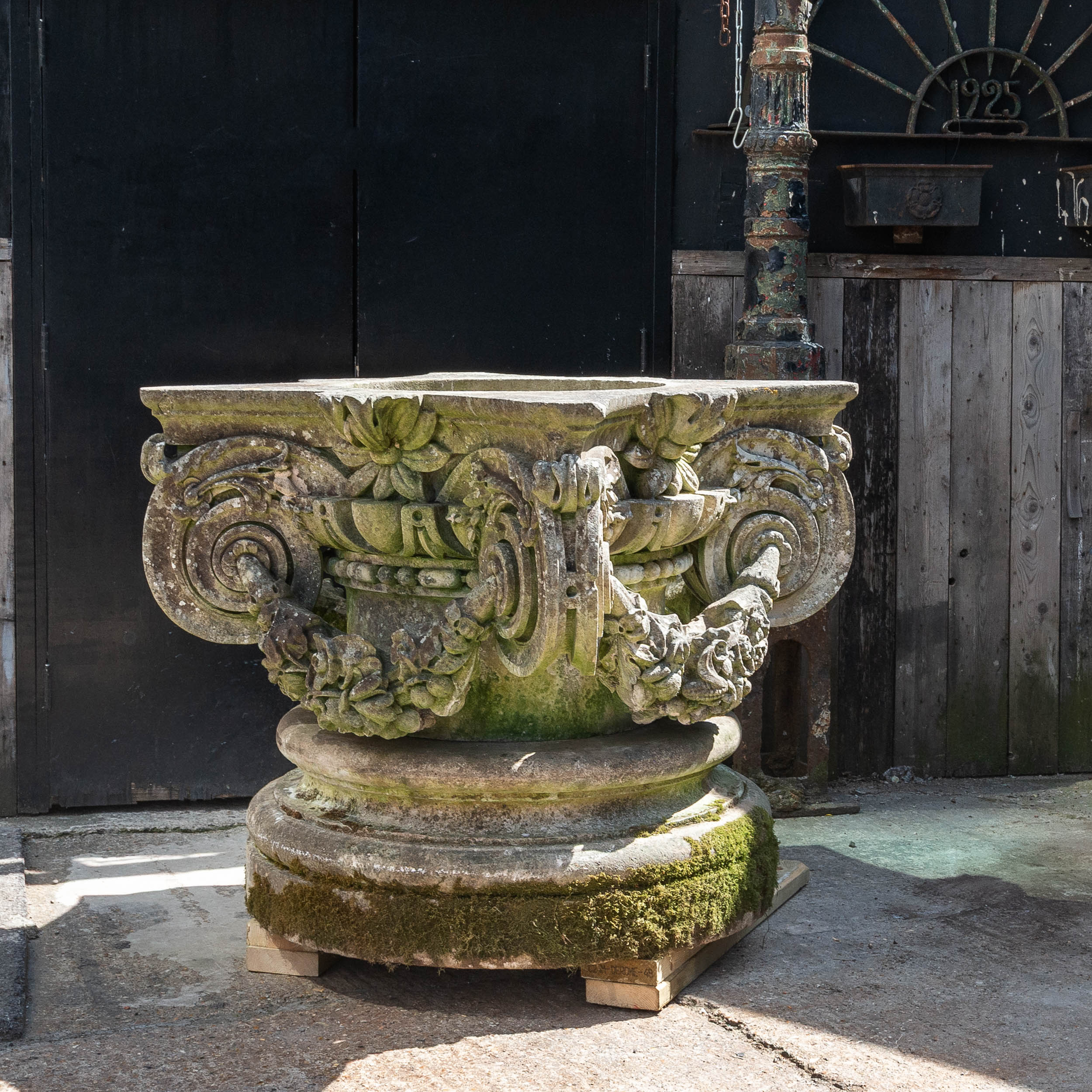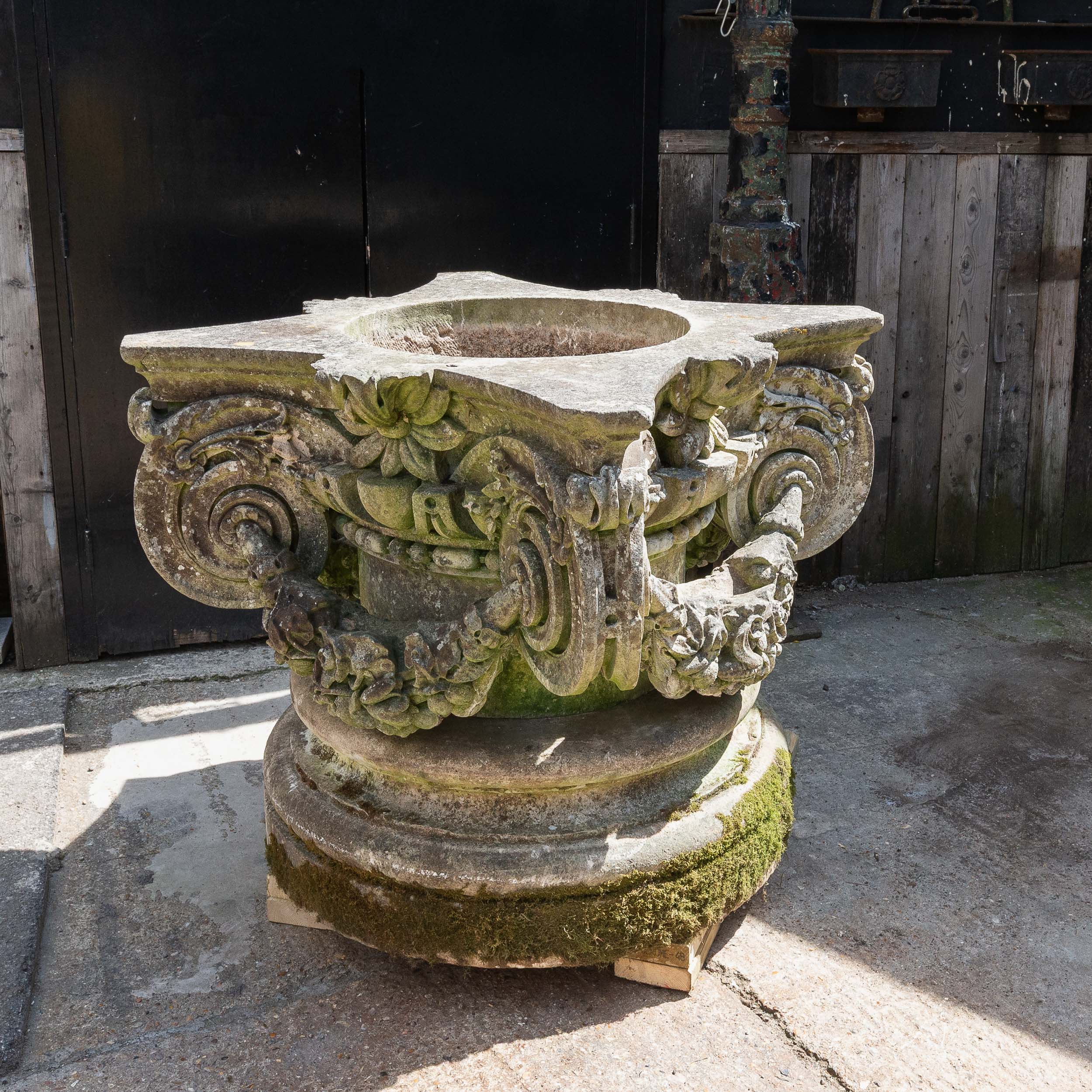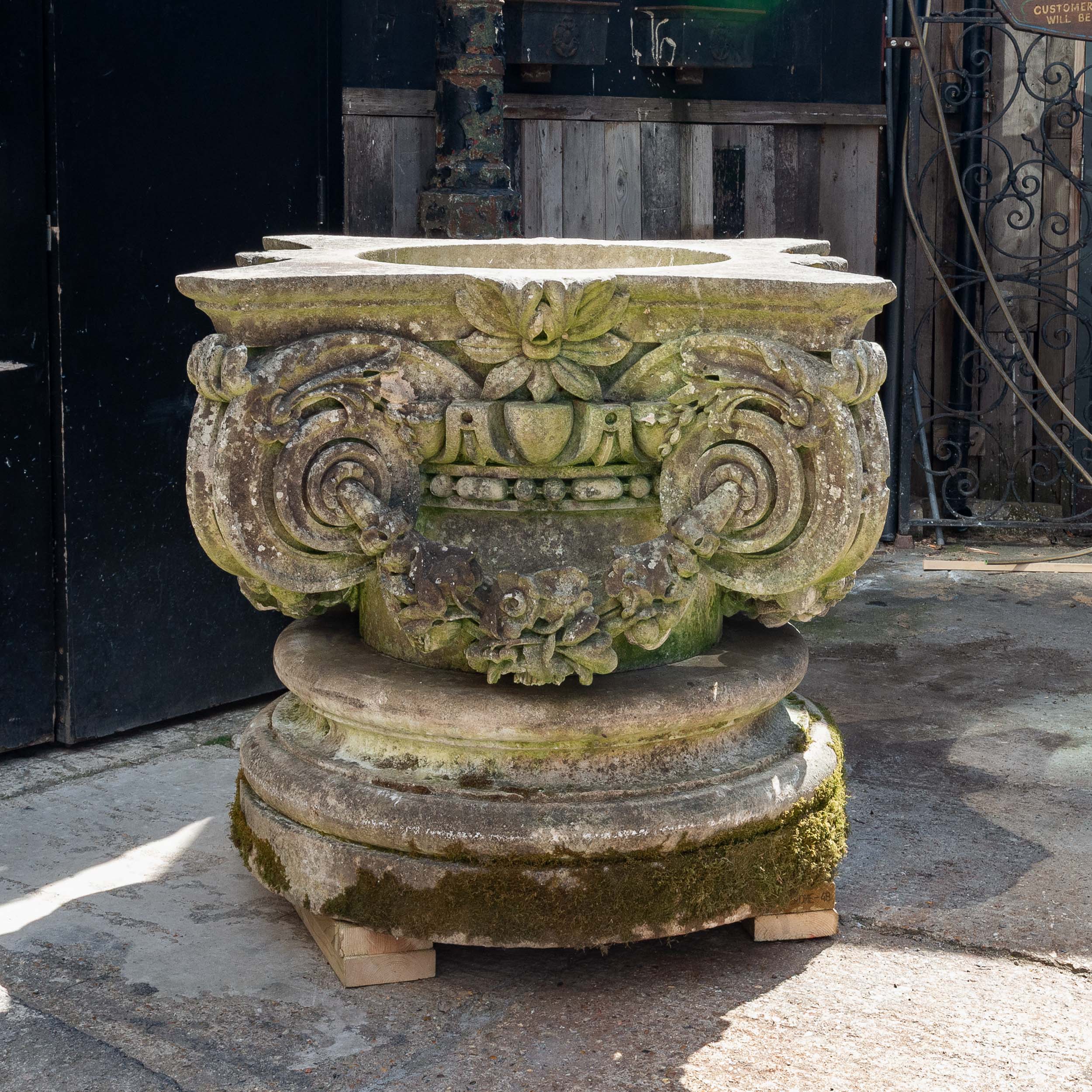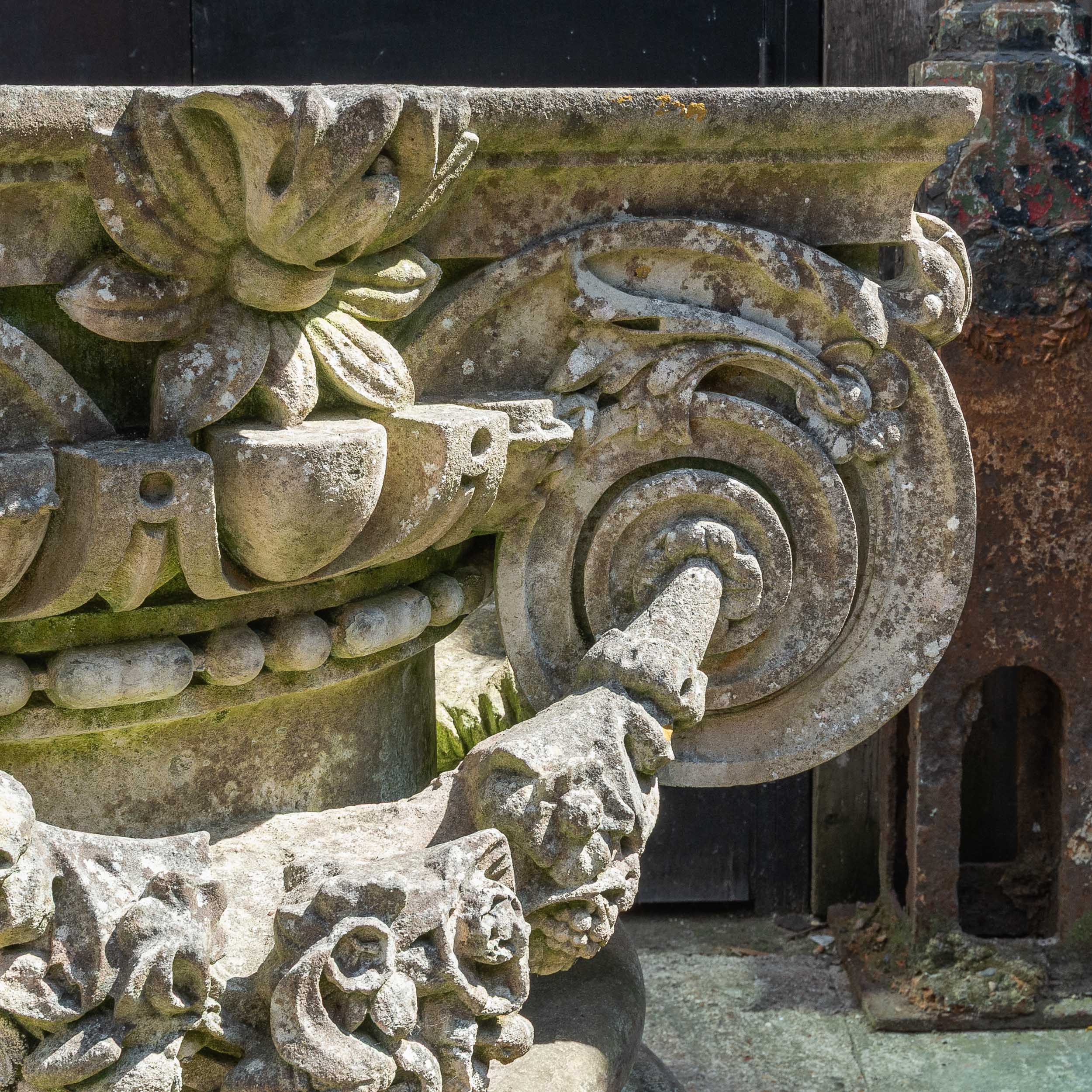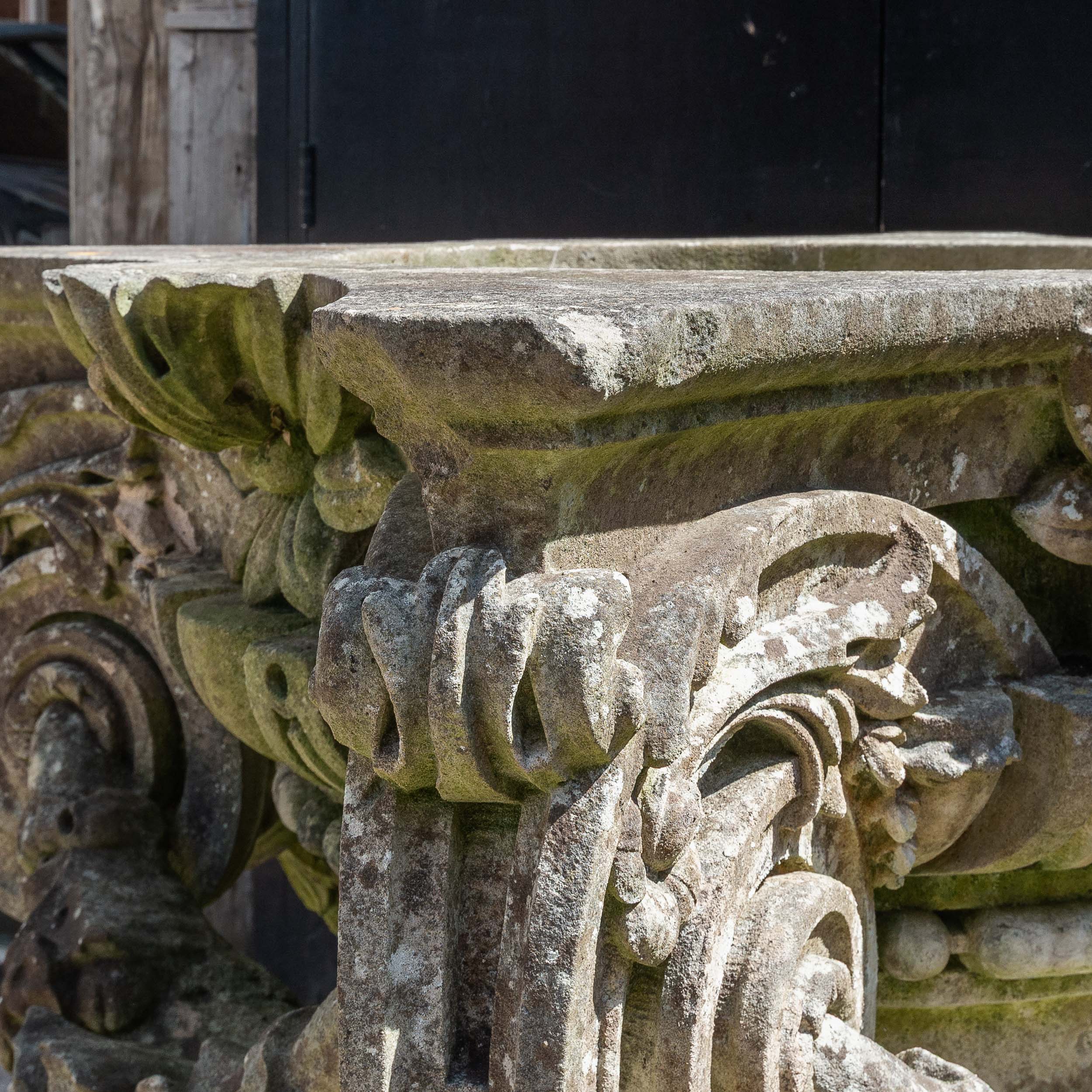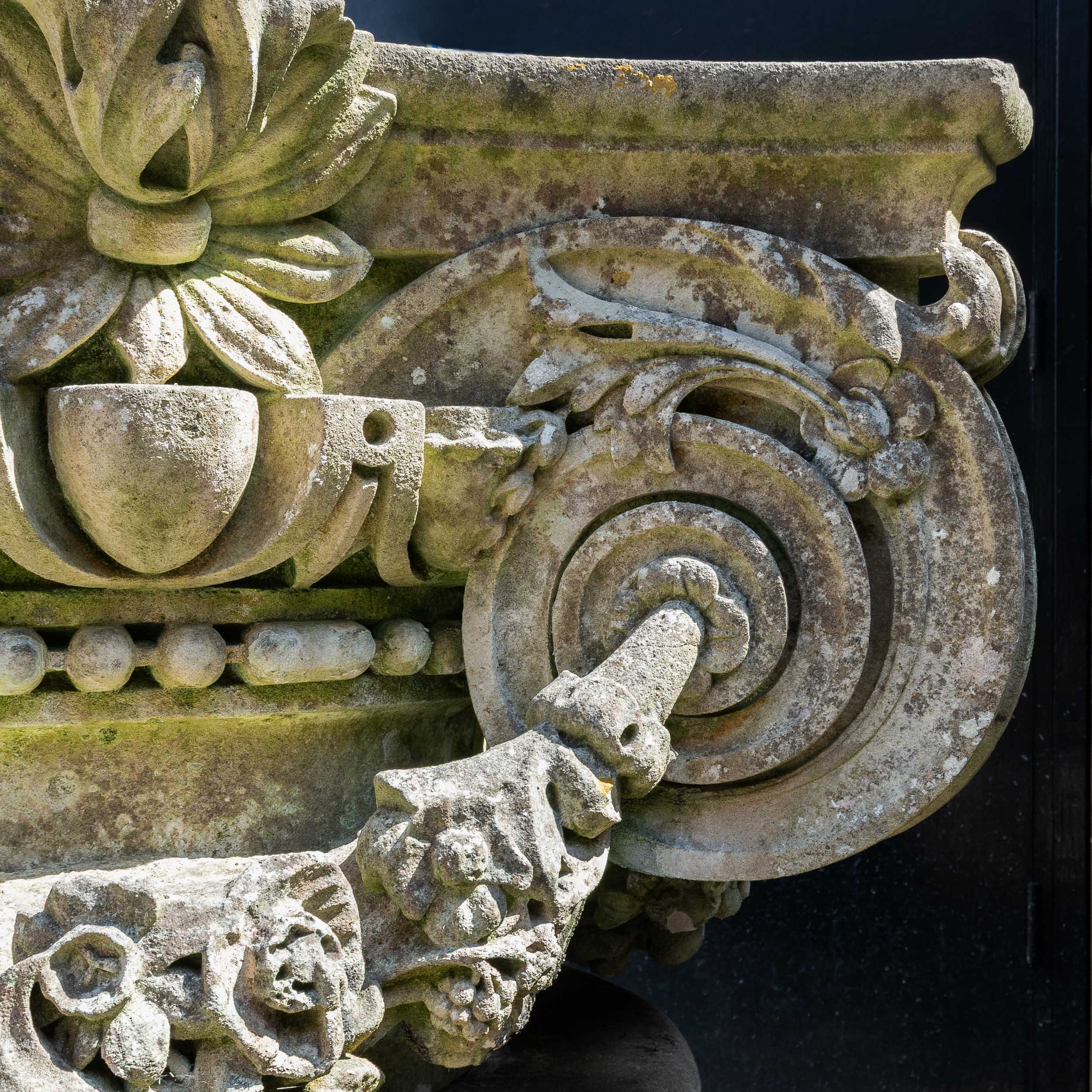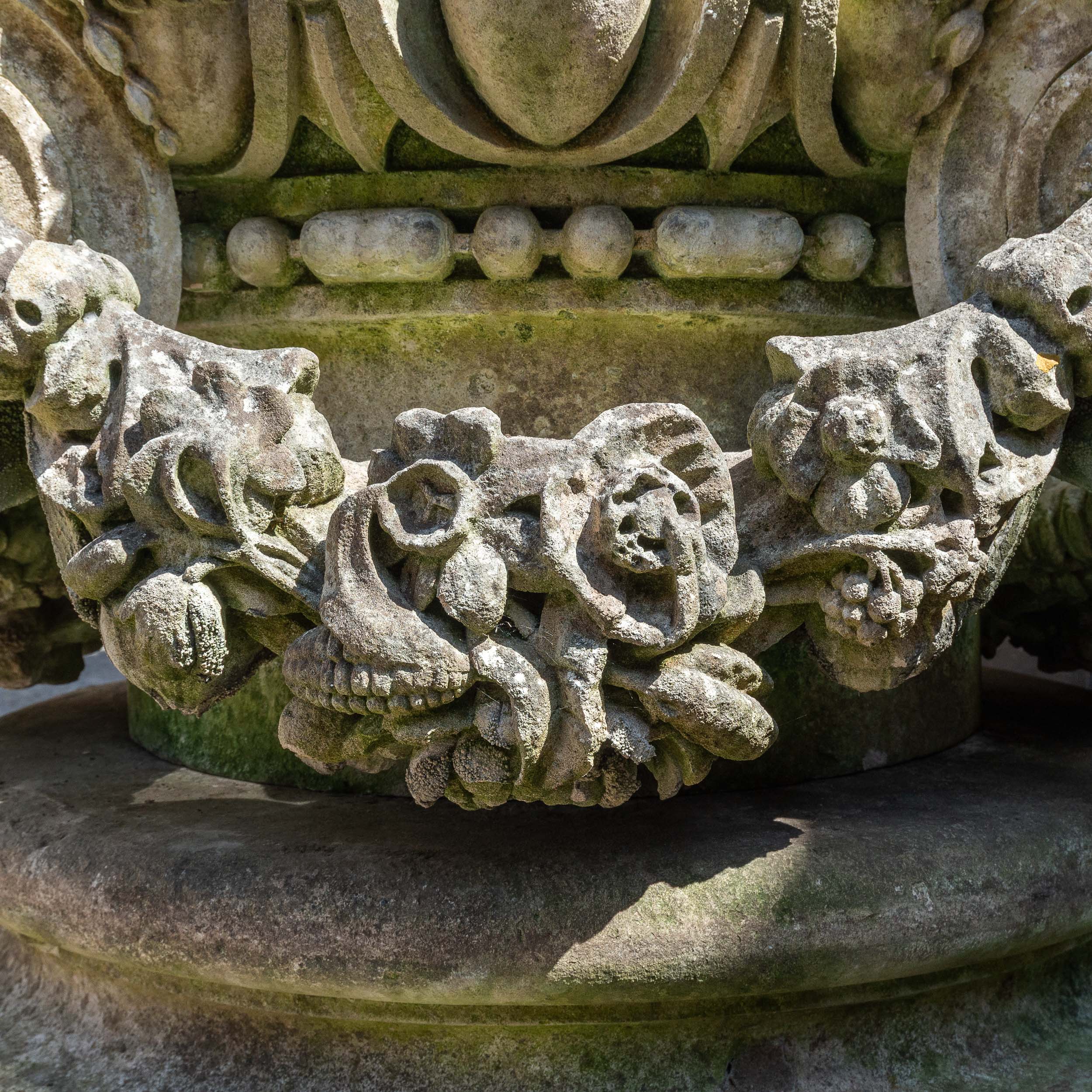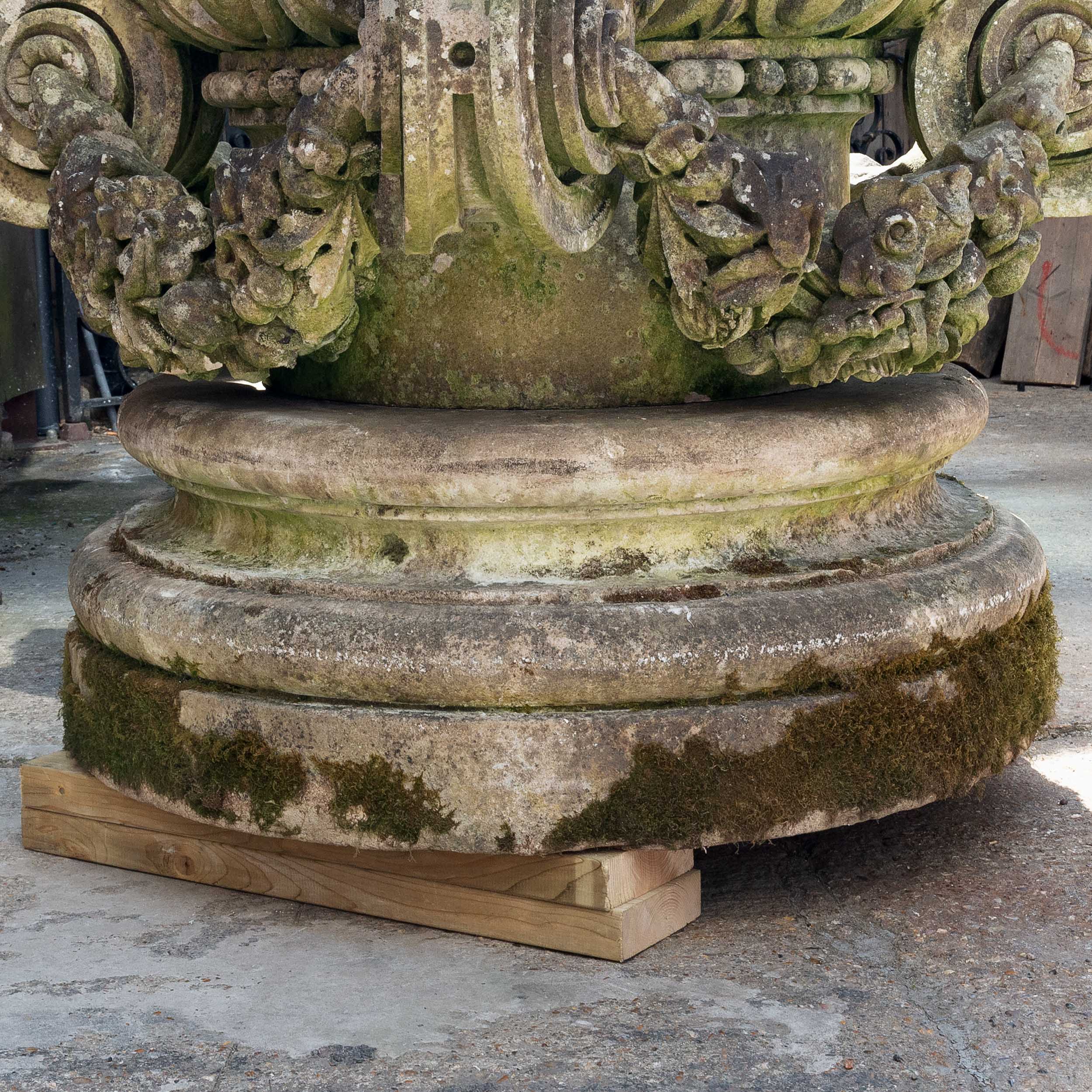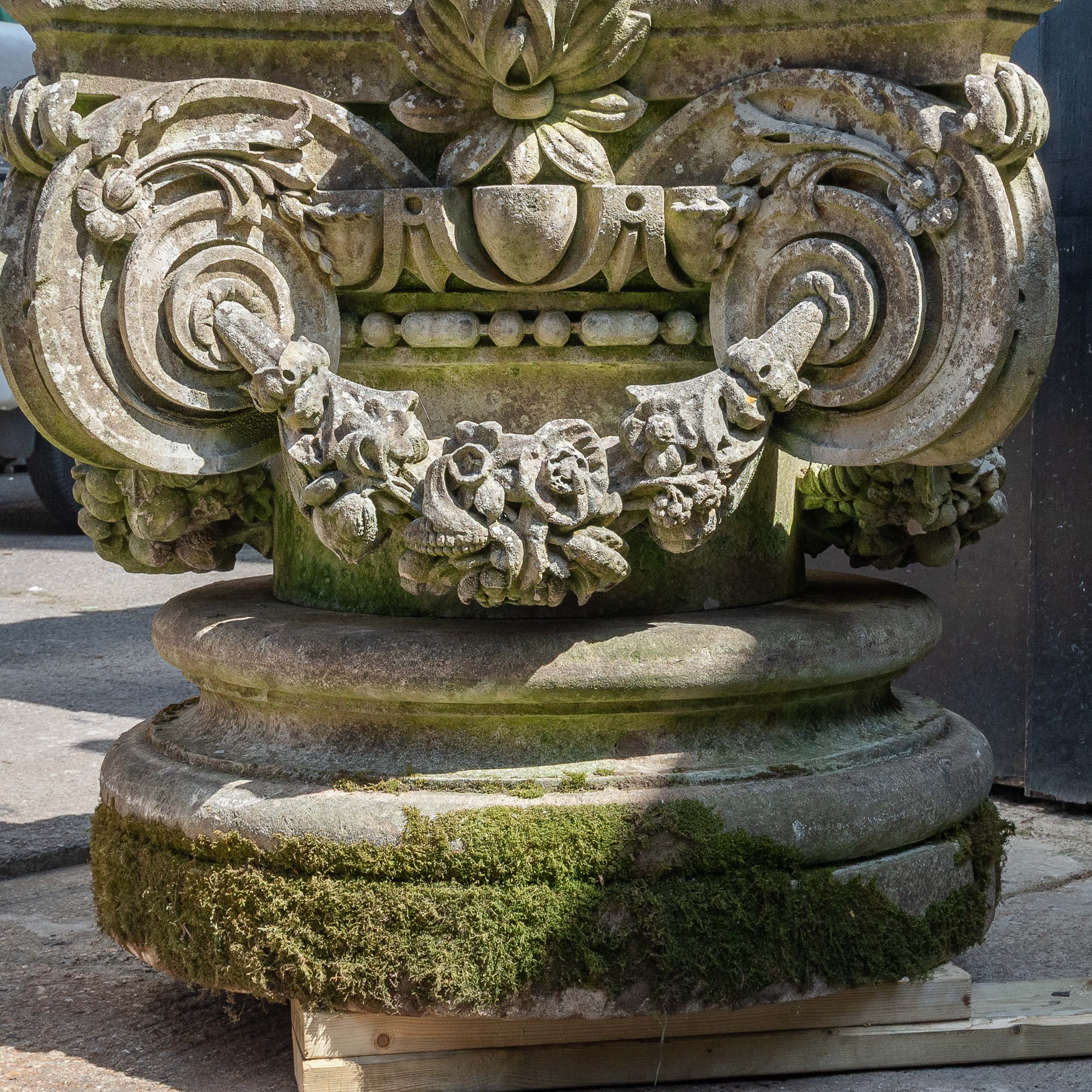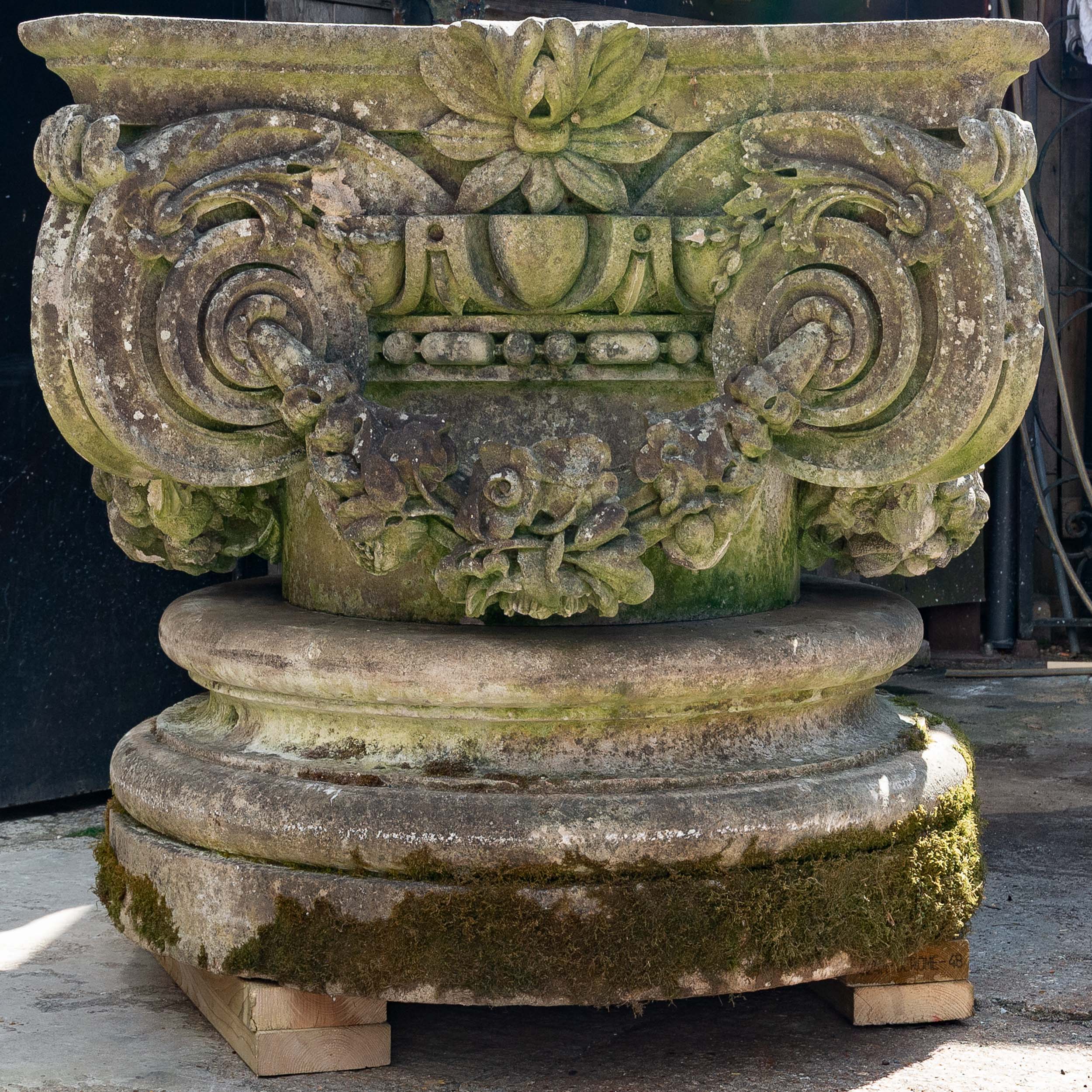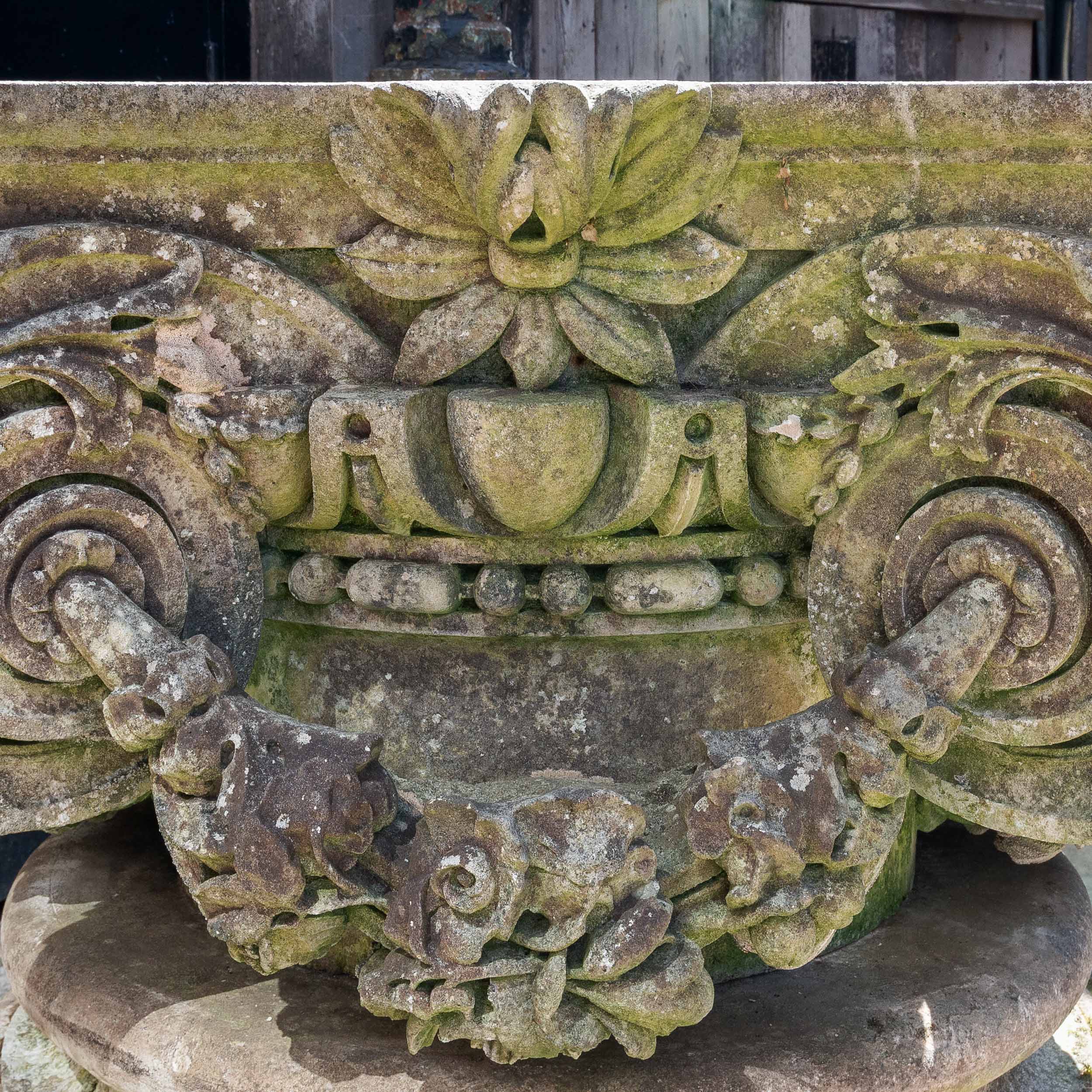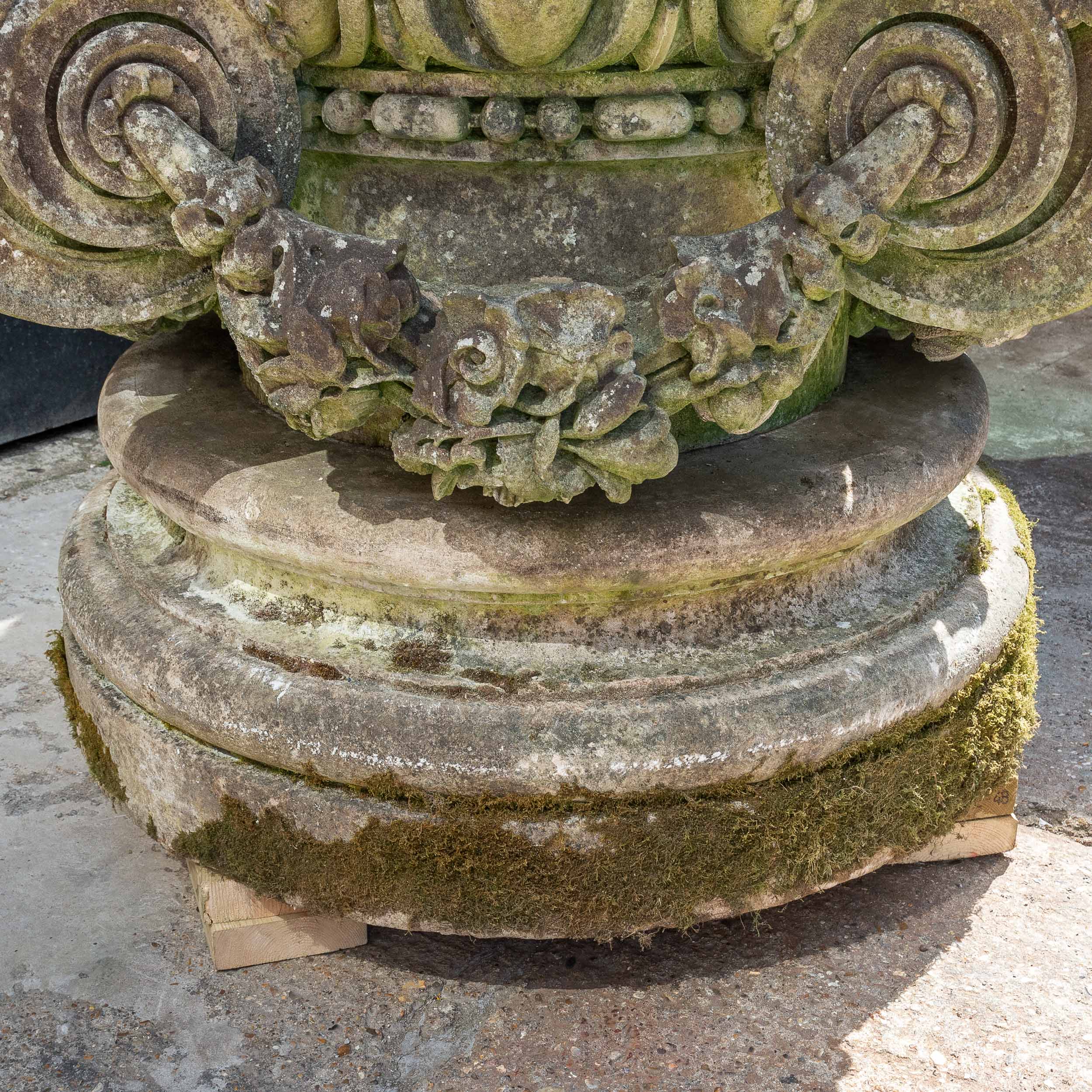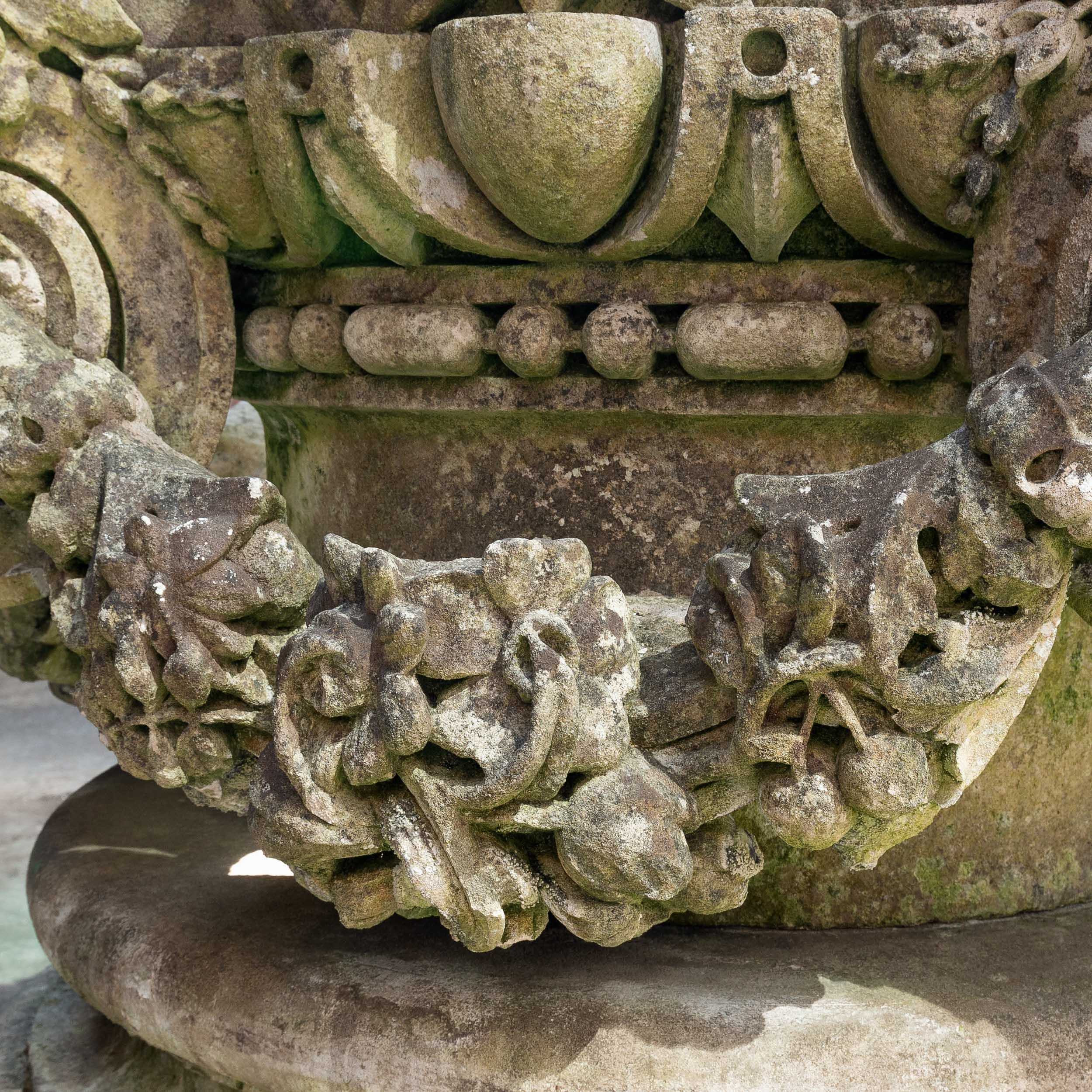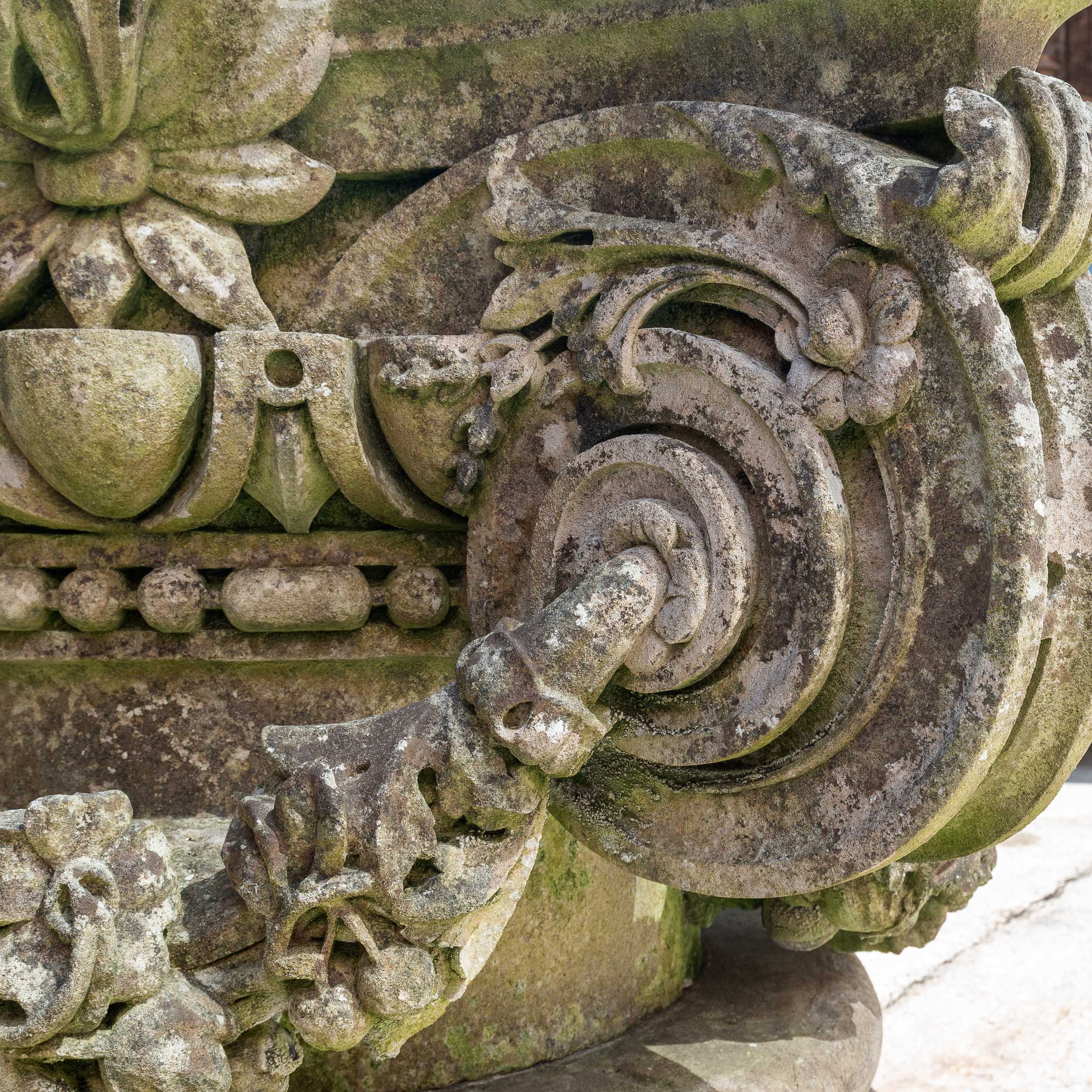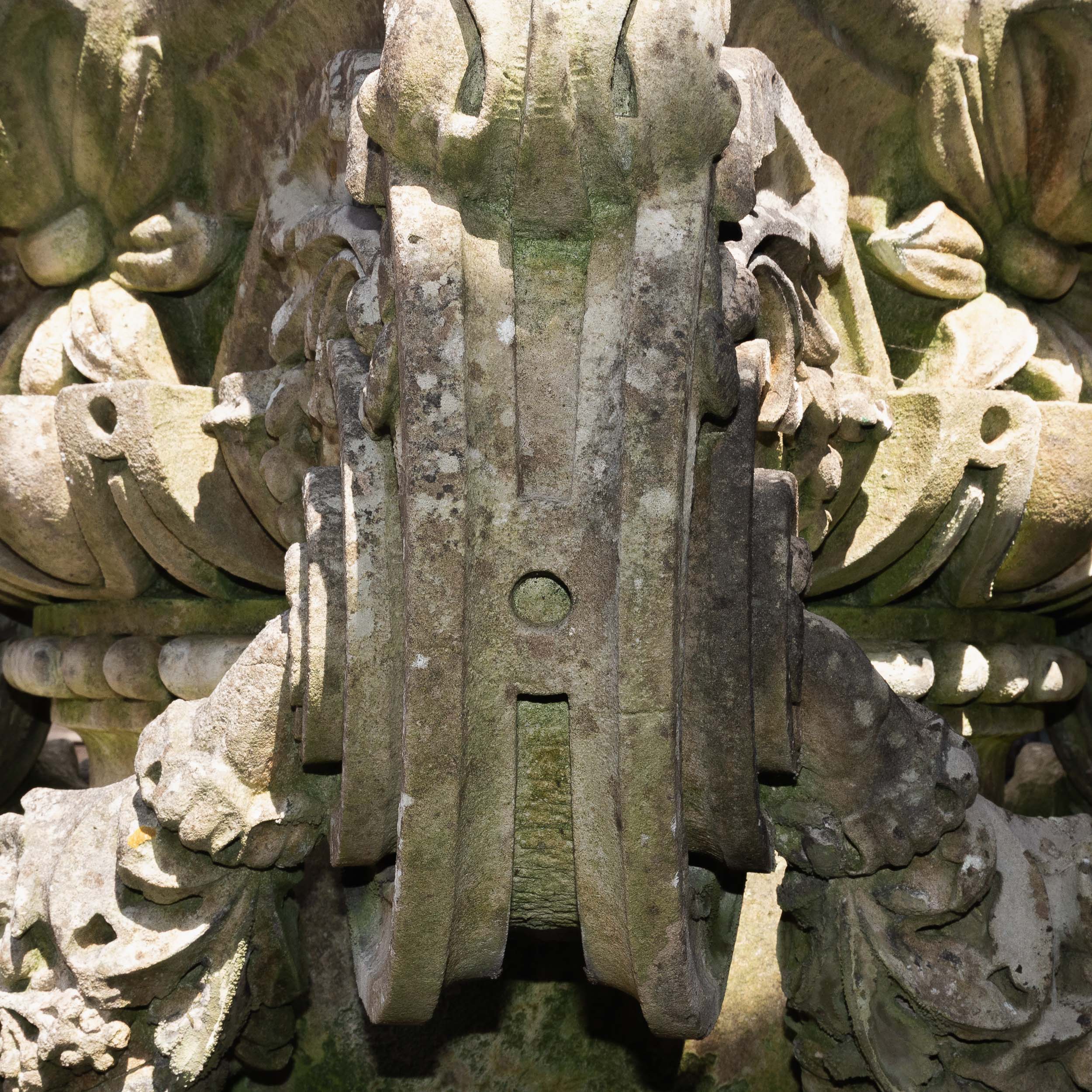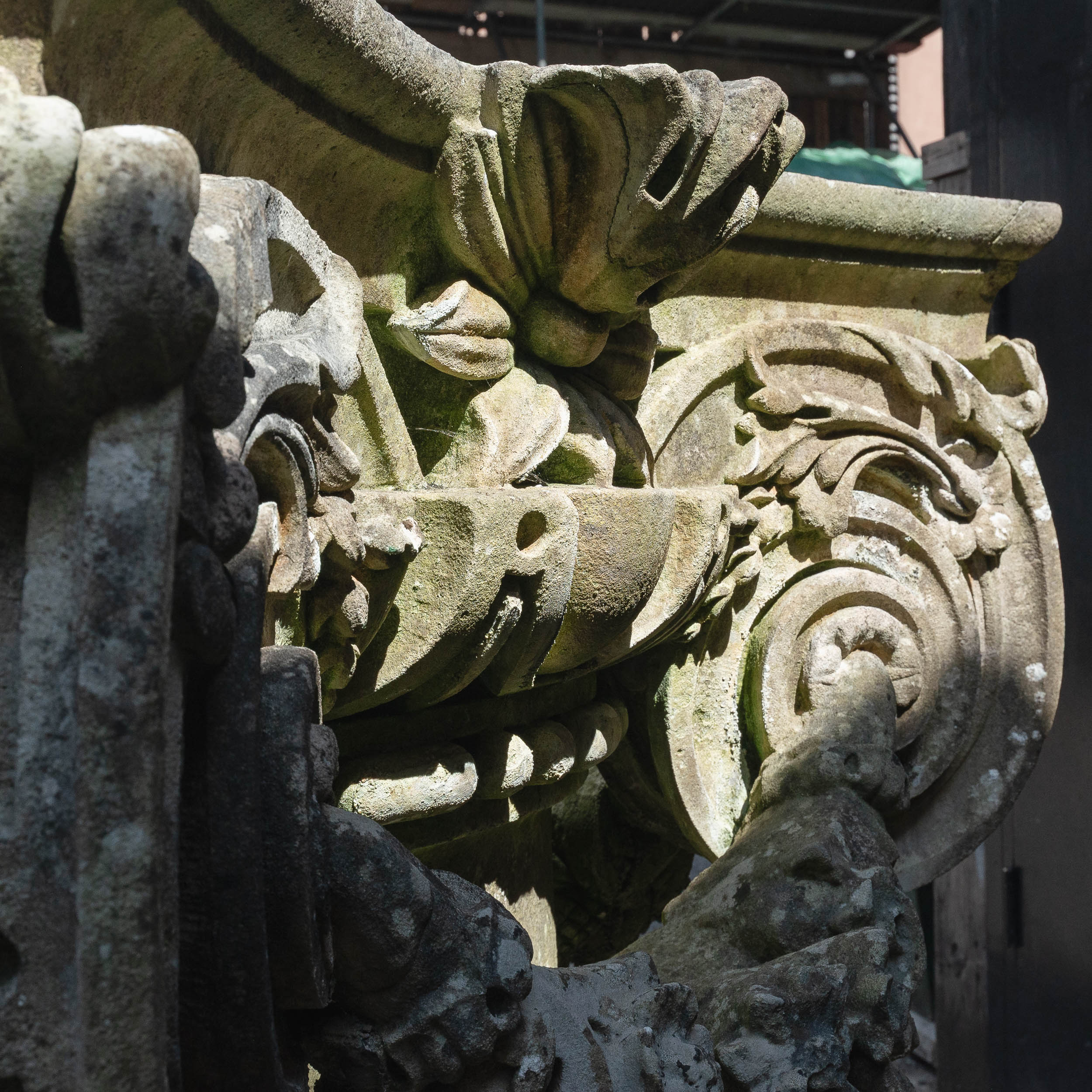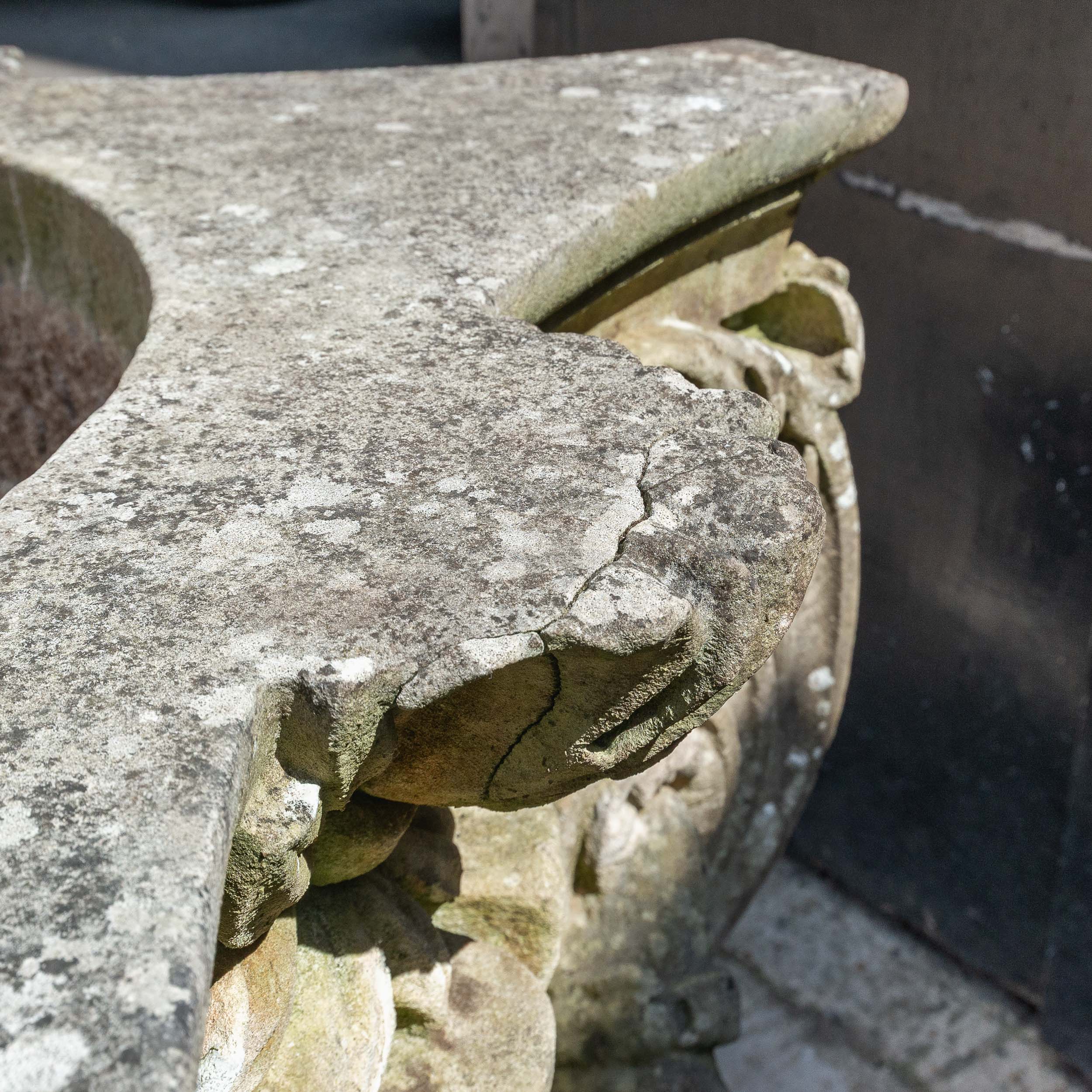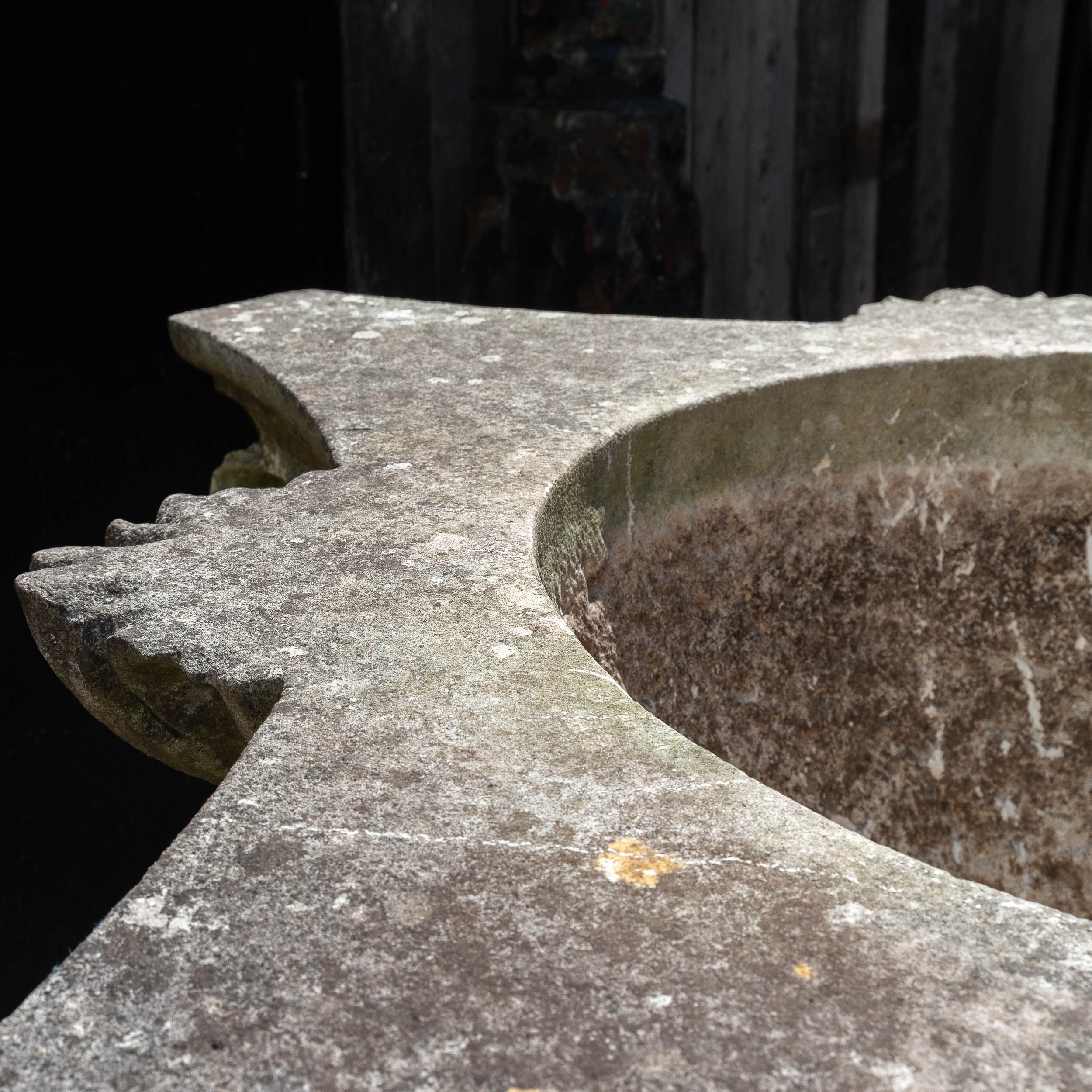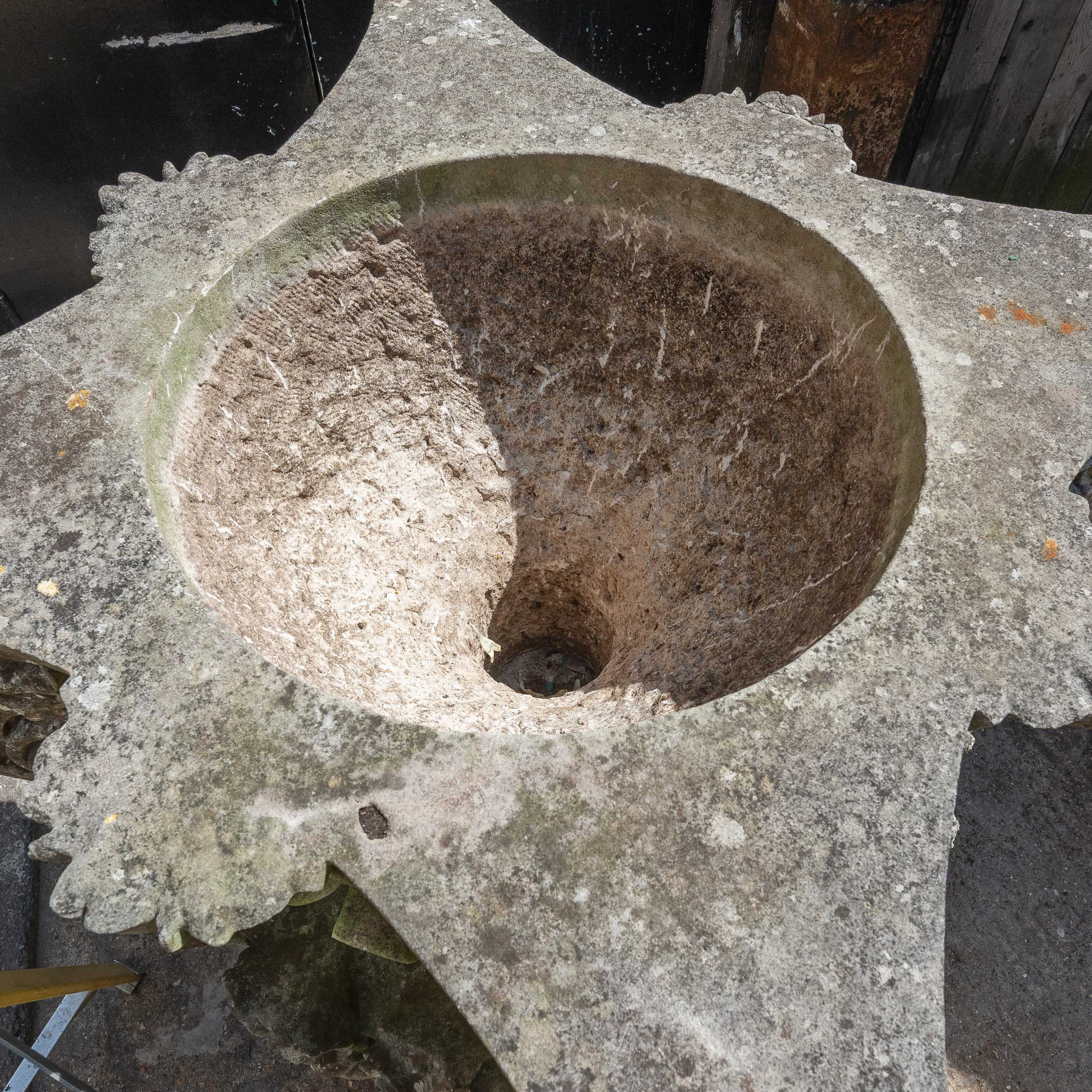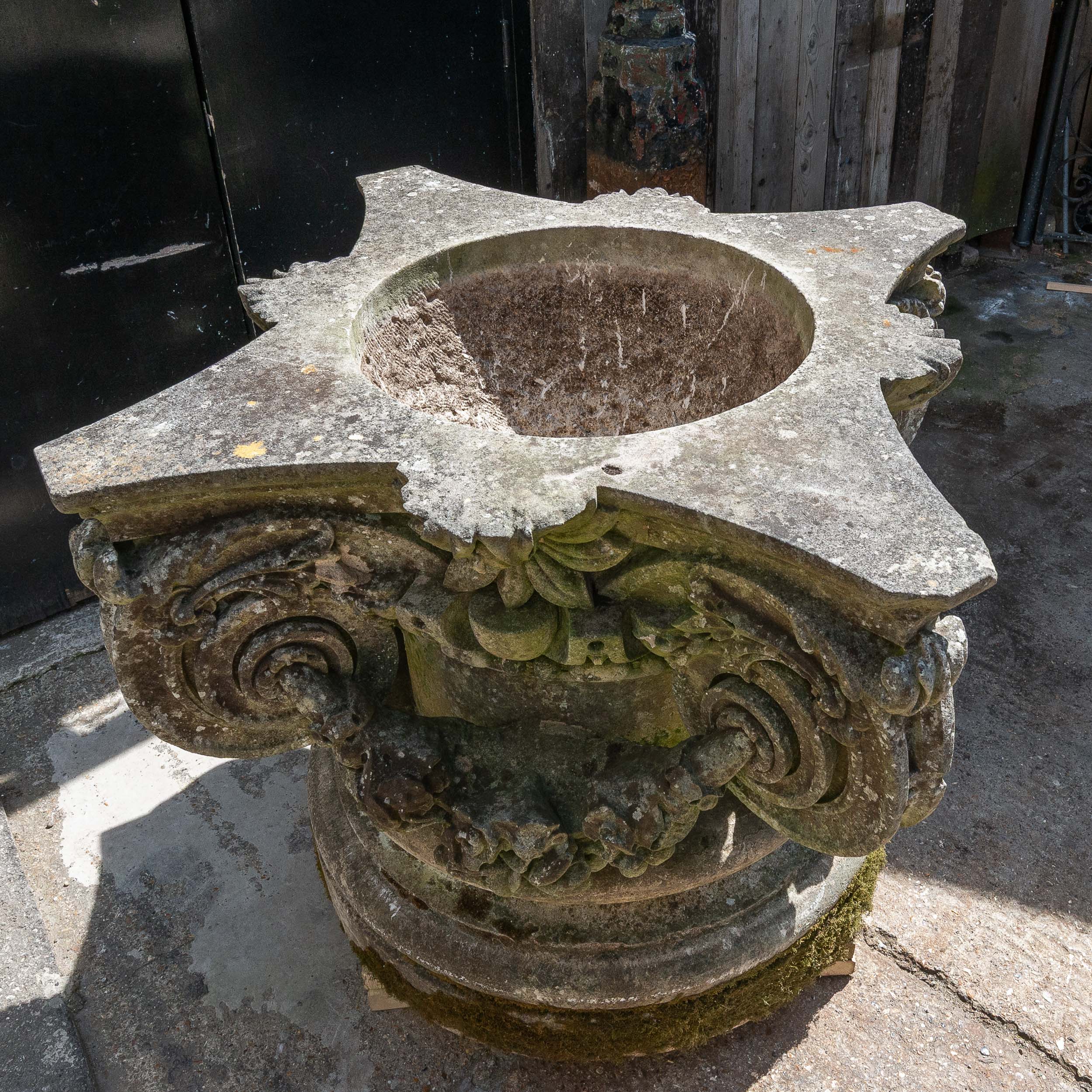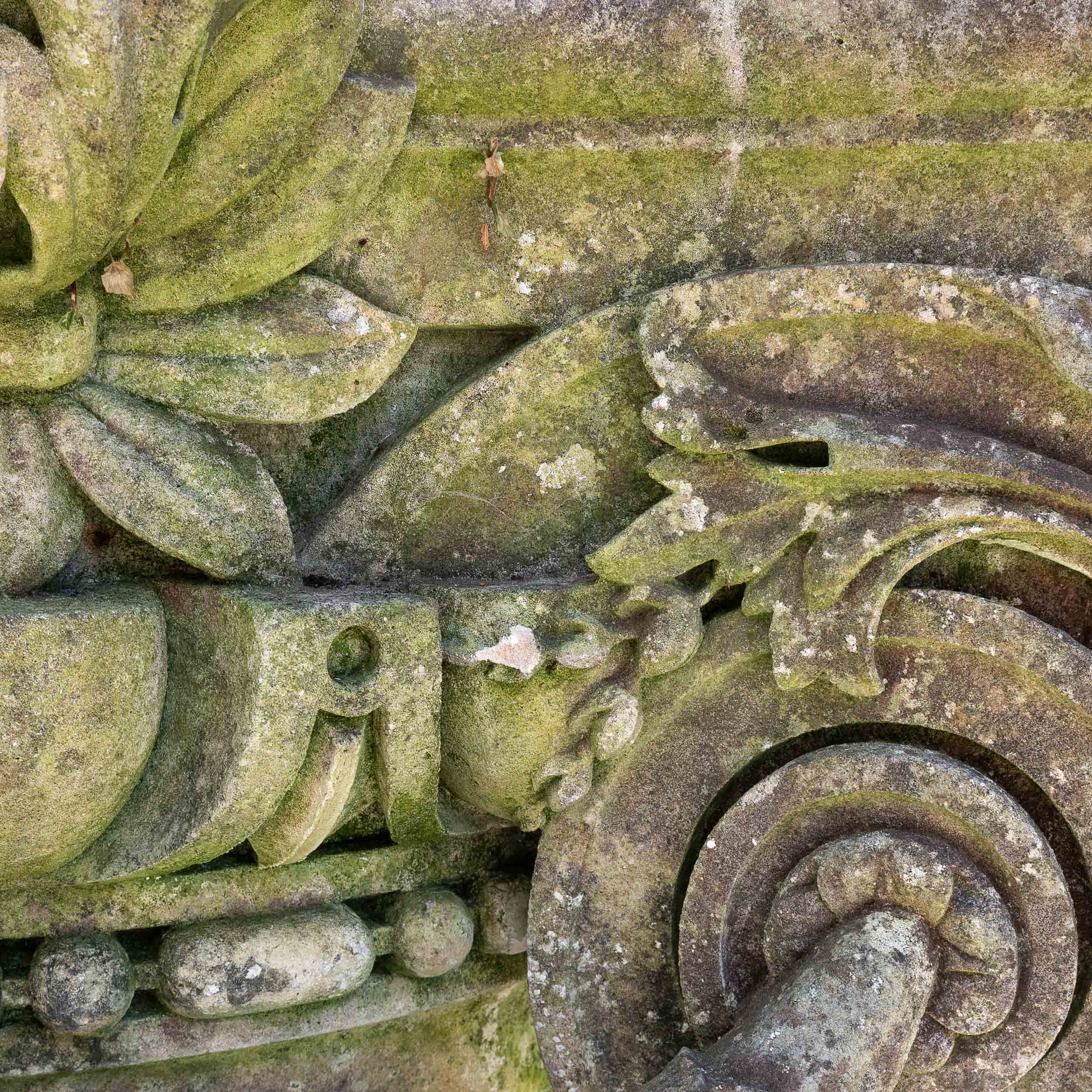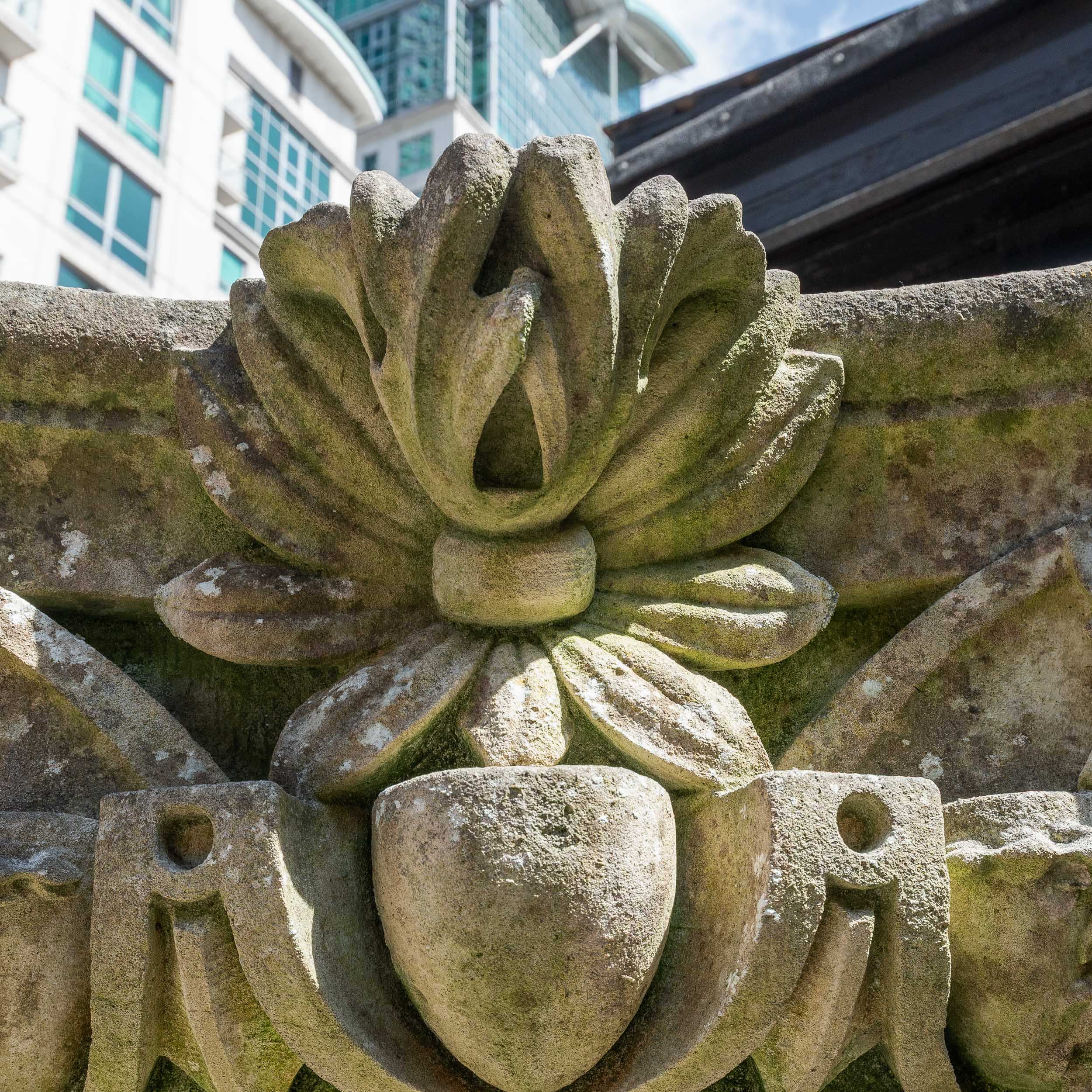Archived Stock - This item is no longer available
Monumental Victorian Portland Stone ‘Scamozzi’ ionic capital,
the leaf enriched scrolled volutes set on the diagonal joined by foliate swags, with flowerheads to each side and bands of egg and dart and barrel and bead moulds below, all raised on turned base, crisply carved and attractively weathered throughout.
SOLD OUT
Out of stock
The revival of the Palladian form of architecture in England the early 18th century led to the recovery and adoption of a number of novel and distinctive architectural features which would become typically and idiomatically identified and aligned with the English Palladian style. Perhaps the most ubiquitous, yet least known, of these is the Scamozzi Capital.
The great Italian Renaissance architect Andrea Palladio himself had been unequivocal in his advocacy of the standard Roman Ionic capital taken directly from the Theatre of Marcellus in Rome. The form, composed of two spiral, scroll-like volutes on a flat front and back, with bolsters joining them on the sides, was to be used by Palladio on almost all his secular buildings, most famously perhaps on his Villa Rotunda in the Veneto.
The English Palladianism of the 18th Century, however, was a mediated revival which looked to the work of Palladio chiefly through the intermediary genius of Inigo Jones. Jones had been the leading Royal architect to the early Stuart Kings of the 17th Century and was the key figure in the retrieval and revival of Classical forms in English architecture. The reverence paid to Jones by the Palladians of the early 18th Century scarcely fell short of idolatry, with Colen Campbell the author of the Vitruvius Brittanicus describing Jones as ‘an Immortal’ and Lord Burlington commissioning the sculptor Michael Rysbrack to design of him an almost votive statuary monument for his house at Chiswick.
Crucially Jones had, for reasons which remain somewhat unclear, emphatically deviated from the Palladian norm by employing, in almost all his buildings, not the Roman Ionic form but rather the diagonally voluted ionic capital derived from the example and work of the Venetian architect and follower of Palladio, Vincenzo Scamozzi.
All Jones’s surviving works, including the Banqueting House on Whitehall the Queen’s House in Greenwich and Lindsey House in Lincoln’s Inn Fields use this versatile and elegant form which, through the pupillage and discipleship of the English Palladians, was to remain the archetypal English form right up the time of Robert Adam.
The form was by no means dormant, either, between Jones and the Palladian Revival. Wren, Vanbrugh, Archer and Nicholas Hawksmoor all employed the Scamozzi Ionic widely, indeed almost exclusively, in their works. In the generation which followed the end of the Civil Wars in 1660 it was to become, through its association with Royalism and Royal patronage, the quintessetial and legitimate English form.
Architects and historians disagree over why Jones first decided to adopt the Scammozi form over the true Palladian. Perhaps the most convincing argument is that the standard Roman Ionic order is the inferior model when viewed ‘in the round’. Where a side elevation is visible, in the Roman Ionic order, the effect is most obviously defective, especially as a principal elevation to a public building. The Scamozzi capital, on the other hand, with its projecting wings and lithe profile, presents no hint of stiffness or clumsiness when viewed from any angle.
The discovery and reclamation of this particularly finely worked and monumental Scamozzi Ionic Capital so close to Lord Burlington’s historic home at Chiswick House is fascinating and invites further research and inquiry. It was, by local repute, originally salvaged from land or property belonging to the 8th Duke of Devonshire and indeed the area of Grove Park in which it was discovered did belong to His Grace the Duke until the mid 1920s when one of his properties, Grove House, was demolished for terraced housing.

